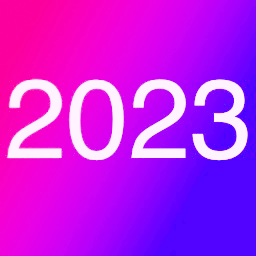23 things from 2023 - Part 3: Helpful Habits

This is part of my round up of 23 things from 2023. The index is here.
12. Micro journaling via my daily TODO list
A habit I’ve got into over the past few years is making a weekly TODO list. It’s not intended to replace JIRA or be shared with anyone else, it’s just for my own use to help prioritise and organise my week.
It’s nothing fancy, it’s just a simple Google Docs template with each workday listed and a checkbox next to each of the things I would like to get done that day. If there’s a JIRA ticket or agile board, I’ll link to that, to make it easy to start or continue the task. If there’s someone I need to talk to or meet with, I’ll @ them (without sharing the TODO doc with them) or put their email.
In the past I’ve tried keeping a daily journal, and I’ve appreciated the benefits, but for whatever reason, the habit hasn’t stuck.
Then I realised that my daily TODO list already has a nice summary of what I intended to do and what I actually managed to get done each day.
At the end of the day, I go through the TODO list and colour code things which I didn’t manage to get done – the colour signifies why it didn’t happen (maybe there wasn’t enough time, maybe the work became unnecessary, maybe it’s technically harder than expected, and so on) – this helps me see at a faraway glance how a day or week went for productivity.
In addition to the colouring, I write a short sentence or two about tasks which were of interest (maybe the ones which had problems, or maybe the ones where I learnt something interesting).
Finally, while I’m in the middle of working on a task, if I want to make any notes, I make them directly in that week’s TODO doc.
The result is I can go back to the doc for any given week and understand what I was working on and how things were going.
13. Tracking my time with Clockify
Working in a traditional office, everyone’s day tends to follow roughly the same pattern and flow – including when people start work, time taken for lunch, when to have breaks, when to stop working. It’s embarrassing if you stray too far outside of those natural boundaries.
Working remotely requires a different kind of discipline – home life inevitably competes with work life – it’s easy to get caught up doing some household chores when you should be working – and vice versa it’s easy to really get into something and work well beyond the 37-40 hours you’re being paid for. Clockify https://clockify.me/ helps me easily keep a track of where I’m spending my time during the day – which helps me make adjustments to my working patterns if I’m spending too long or too little on something – it also goes hand in hand to support my TODO list journaling.
14. Do some work first, even if it’s at 5am
Related to the above, if I start my day off with household or other non-work chores, then it can be difficult to get ‘into’ and engrossed in work afterwards. While my chronotype is one that prefers deep work in the afternoon or evening, my energy and cortisol levels favour the morning.
But the dog likes a walk at 8am, she cries and is awkward all day if she doesn’t get out for a trot around exactly then. Cooking and having breakfast with my partner are enjoyable. There are things to clean up afterwards. Things like that make sense to do at a set time every day.
The solution it seems is to get up BEFORE the dog does and do a bit of work – even if it’s just easy things like writing a TODO list for the day, answering Slack threads and kicking off CI jobs.
When I’ve been working towards a deadline, I’ve even been known to get up at 5am to start work. It’s actually a great time to do work because there are no distractions because it’s so peaceful - nobody (at least in your time zone) is phoning, emailing, posting on social media or making noise.
15. User account separation
I sometimes use my personal laptop for work – and occasionally do personal things on my work machine.
The problem with that is ownership and licensing. Software I install for personal use usually isn’t licensed for business use and I don’t want to accidentally use it in a work context. Additionally, if I part ways with an employer, I don’t want any personal non-work files or data left behind on a machine I’m sending back.
A habit I got into a few years ago to enforce this separation of contexts is to create a ‘work’ account on my personal device – and in some cases a ‘personal’ account on work devices.
I don’t have social media apps or logins on my ‘work’ accounts, so switching account to ‘personal’ to check Facebook has to be a conscious action that I think through which helps reduce unnecessary distracted work/personal context switching.
On occasion, I’ve helped former employers with handover of work, in these cases (such as when I left Ubisoft to join Whispering Gibbon, or when I left Lockwood to join Unity) I’ve been working for multiple employers concurrently so had multiple work accounts on my devices to further sandbox licenses, accounts and documentation to multiple companies.